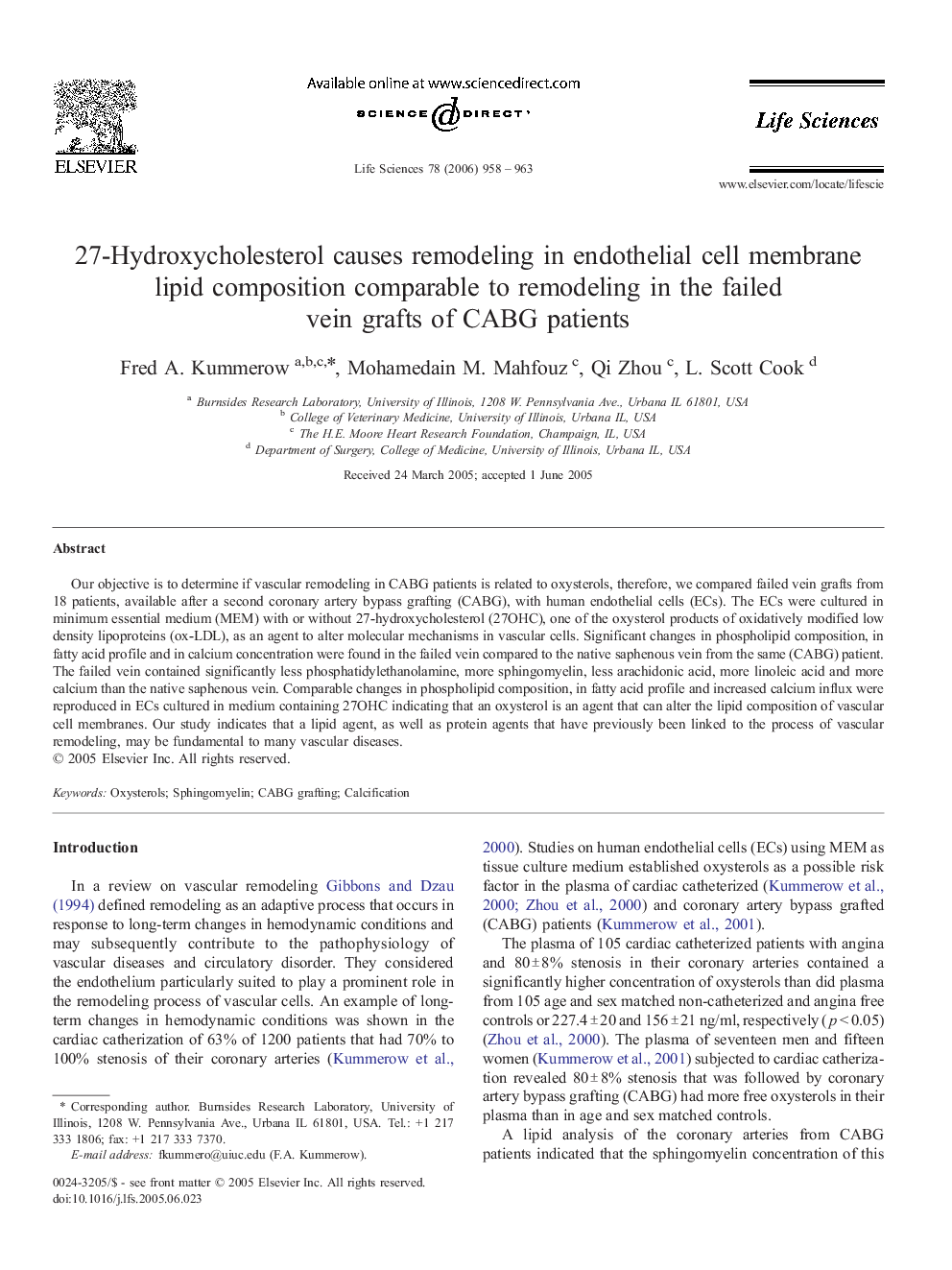| Article ID | Journal | Published Year | Pages | File Type |
|---|---|---|---|---|
| 2554531 | Life Sciences | 2006 | 6 Pages |
Our objective is to determine if vascular remodeling in CABG patients is related to oxysterols, therefore, we compared failed vein grafts from 18 patients, available after a second coronary artery bypass grafting (CABG), with human endothelial cells (ECs). The ECs were cultured in minimum essential medium (MEM) with or without 27-hydroxycholesterol (27OHC), one of the oxysterol products of oxidatively modified low density lipoproteins (ox-LDL), as an agent to alter molecular mechanisms in vascular cells. Significant changes in phospholipid composition, in fatty acid profile and in calcium concentration were found in the failed vein compared to the native saphenous vein from the same (CABG) patient. The failed vein contained significantly less phosphatidylethanolamine, more sphingomyelin, less arachidonic acid, more linoleic acid and more calcium than the native saphenous vein. Comparable changes in phospholipid composition, in fatty acid profile and increased calcium influx were reproduced in ECs cultured in medium containing 27OHC indicating that an oxysterol is an agent that can alter the lipid composition of vascular cell membranes. Our study indicates that a lipid agent, as well as protein agents that have previously been linked to the process of vascular remodeling, may be fundamental to many vascular diseases.
